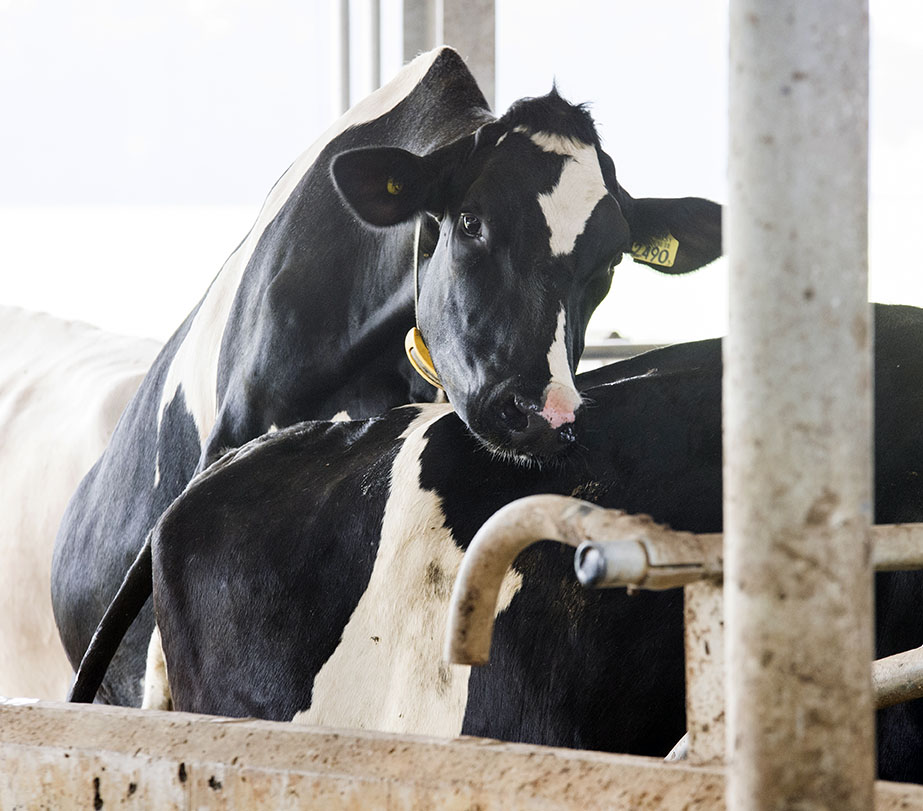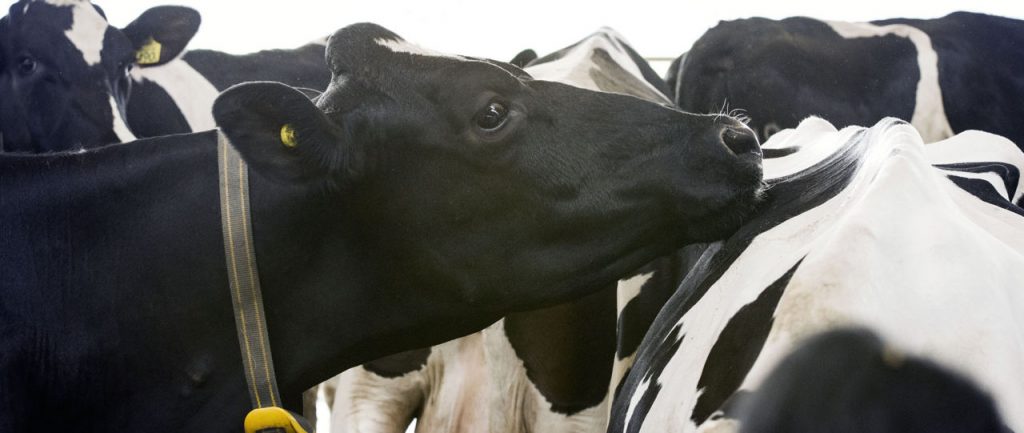
Give your cows the environment they need for excellent heat expression
Getting cows bred in a timely manner and pregnant at first service is impacted by their ability to show a heat. If cows’ environment isn’t conducive to expressing heats with physical indicators like mounting, chin resting and sniffing – it could impact your herd’s bottom line.
Stephanie Aves
Business development manager in North America
“Many influences play a role in a cow’s reproductive cycle. When dairy farmers have strategies in place to allow for cows to express heats, they can breed them at the optimum insemination time and better reach their reproduction goals.”

To make sure you’re not missing a cow in heat evaluate these six management areas¹:
1. Housing
Too many cows in one place can decrease the amount of activity in a group. Ensure cows have adequate space to allow cow-to-cow interaction by using the following parameters:
- Have at least one lying stall for each cow.
- Include at least two feet of bunk space per cow.
2. Floor surface
Any slippery or very coarse surface makes cows nervous. Continuously keep your freestall floors clean. Incorporate these cow-friendly floor characteristics on your dairy²:
- A dry walking surface
- Confident and comfortable footing with sufficient floor grip
- Durable floor
3. Feet and leg problems
Cows with sore feet or legs exhibit less mounting activity. When they’re not in heat and have sore feet or legs, they may stand to be mounted by another cow because they don’t want to move. Ultimately, showing a false heat. Additionally, sub-acute ruminal acidosis (SARA) can cause lameness in cows³. To help with mounting activity, consider the following tips:
- Incorporate a hoof trimming routine
- Breed for better feet and legs
4. Status of herd mates
The number of mounts per cow increases with the number of cows currently in heat. Therefore, the chance of more than one cow being in heat on any day becomes less for smaller herds or with an increase in pregnant cows in a group. Consider dividing your groups so higher producing, early lactation cows are together in a group. Not only does this offer more efficient heat detection and artificial insemination, but it also allows you to productively feed a diet for higher production⁴.
5. Keep cows cool
External temperatures above 85 degrees F cause less mounting because cows are uncomfortable in this high-temperature weather⁵. Integrate proper heat abatement strategies for your farm to keep your cows cool and active during warmer weather. This could include fans, water sprinklers and shade canopies.

6. Activity monitors
Watching for heats 24/7 is another challenge you face. With an activity monitoring system and having the above tips set in place, you don’t have to worry about missing a single heat. Even when you’re not around to see it.
“Inseminating cows at the right time matters to your dairy’s bottom-line, so it’s important to catch cows in heat when it’s most productive to breed them,” says Aves. “Activity monitors are a tool to track heats 24/7 so you don’t have to spend time watching for heats or worry about missing a heat. However, to catch cows in heat, cows need to physically show their heats. Having appropriate environmental and management protocols in place will help ensure you never miss a single heat.
¹Diskin MG, Sreenan JM. 2000. Expression and detection of oestrus in cattle. Animal Reproduction Department, Teagasc, Athenry, Co. Galway, Ireland. Reprod. Nutr. Dev. 40: 481-491
²Gooch CA, 2013. Flooring considerations for dairy cows. Department of Biological and Environmental Engineering, Cornell University.
³Abdela N. 2016. Sub-acute Ruminal Acidosis (SARA) and its Consequence in Dairy Cattle: A Review of Past and Recent Research at Global Prospective. School of Veterinary Medicine, College of Agriculture and Veterinary Medicine, Jimma University.
⁵Heat Detection and Timing of Insemination for Cattle

